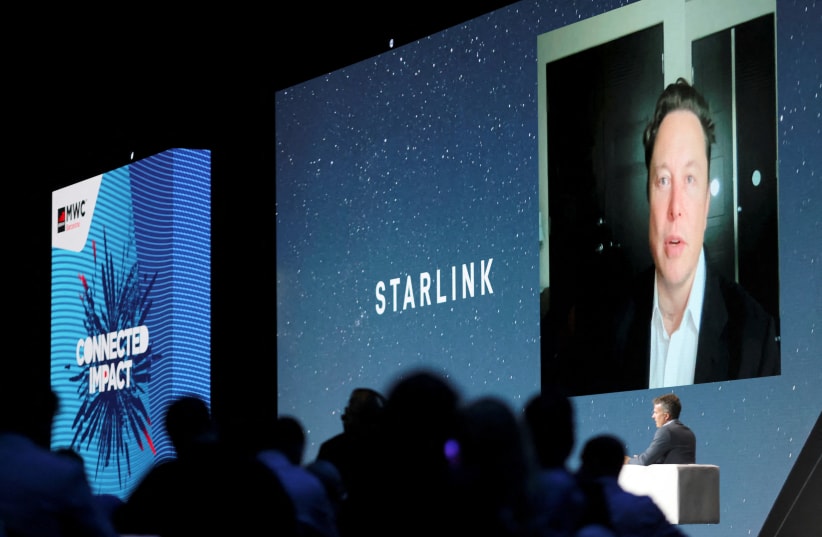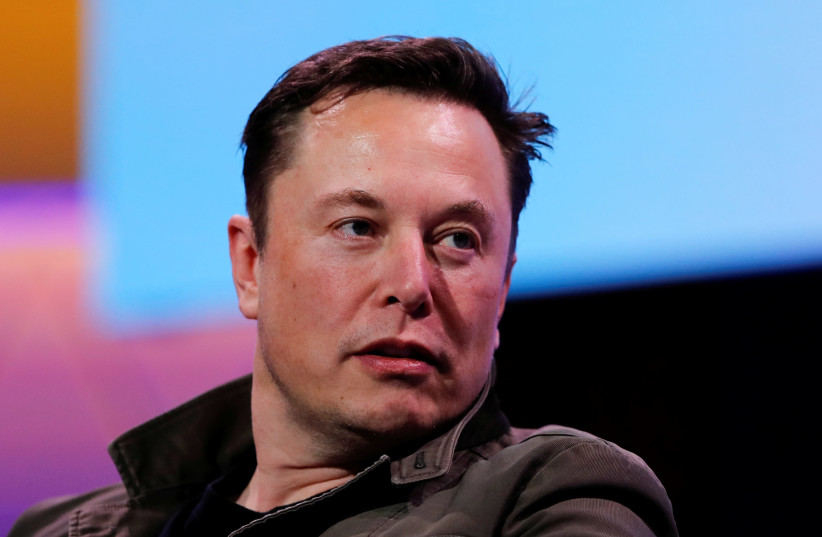Close to 100 Starlink stations are in place in Iran to provide Iranians with internet service that is not subject to the Islamic Republic's restrictions and control.
“Approaching 100 Starlinks active in Iran," Elon Musk tweeted on Monday. But the attempt to provide Iranians with restrictions-free internet faces various obstacles before it can become a real solution to the blockade on free information flow in the country.
Starlink, operated by SpaceX, a company owned by Elon Musk, is a network of low-orbit satellites that transmit internet service to receivers on the ground. The satellites were activated in Iran in September, shortly after the beginning of the protests sparked by the death of the young Kurdish Iranian woman Mahsa Amini while in the custody of the morality police. According to reports, the receivers, which Elon Musk says now number almost 100, began to be smuggled into Iran in October.
The effort comes due to the limited access to the internet and the restrictions that the Iranian people have faced in their flow of information, especially after the start of the current wave of protests.
Why is Iran limiting internet access?
"The Islamic Republic operates on the premise of controlling the flow of information so it can manipulate and control the narrative inside the country."
Narges Shiraghaei
"The Islamic Republic operates on the premise of controlling the flow of information so it can manipulate and control the narrative inside the country," according to Narges Shiraghaei, an Iranian women’s rights activist and health advocate currently living in Sweden.
She told The Media Line that the Iranian government filters the content in some of the most popular social media and information platforms such as Youtube, Telegram, WhatsApp, Facebook and Wikipedia. During the last 100 days, she adds, "even having access to the Gmail accounts is not possible most of the time."
Shiraghaei explains that access to these platforms can vary depending on what is happening in the country.
"If there is a protest or fear regarding one, the internet speed goes down, or they shut down the access entirely," she said, adding that there is privileged unfiltered access available to certain groups of the population.
Roxane Farmanfarmaian, a lecturer on Middle East politics at the University of Cambridge and an expert on Iran, notes that many people are accessing the blocked internet services through VPN, or virtual private network, "but it is patchy," she said.
She told The Media Line that, by limiting the flow of information, the Iranian government is trying to reduce information spread about the protests, arrests, abuse and prisoner conditions.
"They are also attempting to quash information on mourning rituals, which draw crowds to the burial sites of those killed, like Mahsa Amini," she added.
Shiraghaei stresses the importance of having a free flow of information on the internet.
"Having access to the internet plays a key role to give power to people, because not only they can raise their voices with the help of the internet, but it also allows them to mobilize and coordinate disobedience and protests," she said, adding that it also has a positive psychological effect as people can be empowered by seeing what others think.
Despite the some 100 receivers for satellite internet service that are in place in Iran, Farmanfarmaian says it is not enough to successfully empower the protest movement, nor change the power structure.
On the contrary, she argues that there will not be unlimited access to the internet in Iran until the power relations with the regime changes.
She explained that Starlink's service is illegal in Iran, making its use considerably dangerous for the users.
Additionally, Farmanfarmaian noted that the 100 active terminals, which operate like routers, can support up to 10-20 devices each, but not more.
Shiraghaei adds that the biggest issue with Starlink is that it can be traced from the ground. "For it to be a viable solution, the number of devices should be really high for it to become practical," she said, adding: "So that when the government tracks and confiscates one, there are more out there to be used.”
Farmanfarmaian cites Simon Angus, director of the Monash IP Observatory, which monitors the quality of the internet around the world, who said in an interview with Middle East Eye that Starlink is not a solution for an entire country's internet needs. "It doesn't scale like that," he said.
At the moment there are 100 active receivers in Iran, which compared to the 23,000 that SpaceX placed in Ukraine "is not very many, and most of the country is not covered," according to Farmanfarmaian.
Shiraghaei points to an additional problem, which is the fee for the services, and which she says can be solved through donations from outside of Iran to pay for the use of Starlink.
The Iranian government has been controlling the information flow on the internet since its very first days.
When the internet arrived in Iran, Shiraghaei notes, there was a lot of discussion among government officials about banning and refusing to build the needed infrastructure. But the value it brought could not be ignored and, therefore, they decided to create a system around it that they can control, Shiraghaei explains.
Farmanfarmaian notes that the satellite internet system that was set up in partnership with Chinese companies “is sophisticated and intrusive," adding that the Iranian government does not see the 100 active nodes as an important problem.
She cites The Wall Street Journal's report saying that 200 terminals have been smuggled in, and that the Iranian government is unimpressed.

